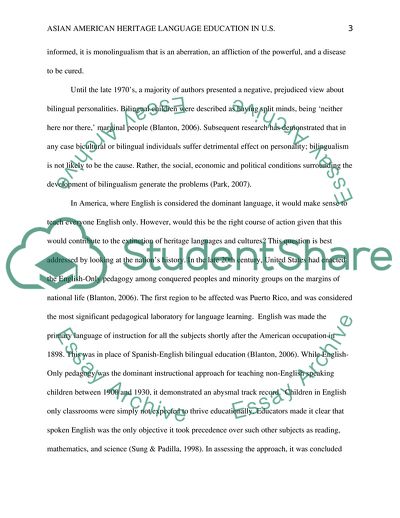Cite this document
(Asian American Heritage Language Education in the U.S Literature review Example | Topics and Well Written Essays - 2000 words, n.d.)
Asian American Heritage Language Education in the U.S Literature review Example | Topics and Well Written Essays - 2000 words. https://studentshare.org/education/1797810-asian-american-education-studies-asian-american-heritage-languages-education
Asian American Heritage Language Education in the U.S Literature review Example | Topics and Well Written Essays - 2000 words. https://studentshare.org/education/1797810-asian-american-education-studies-asian-american-heritage-languages-education
(Asian American Heritage Language Education in the U.S Literature Review Example | Topics and Well Written Essays - 2000 Words)
Asian American Heritage Language Education in the U.S Literature Review Example | Topics and Well Written Essays - 2000 Words. https://studentshare.org/education/1797810-asian-american-education-studies-asian-american-heritage-languages-education.
Asian American Heritage Language Education in the U.S Literature Review Example | Topics and Well Written Essays - 2000 Words. https://studentshare.org/education/1797810-asian-american-education-studies-asian-american-heritage-languages-education.
“Asian American Heritage Language Education in the U.S Literature Review Example | Topics and Well Written Essays - 2000 Words”. https://studentshare.org/education/1797810-asian-american-education-studies-asian-american-heritage-languages-education.


